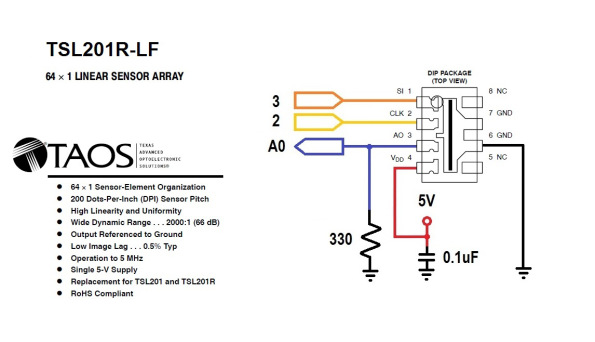CCD Line scanning sensor
-
A line scanning sensor could be useful for many things:
- flow detection
- rotary counter detection
- water, volume detection
- line following
...
Wiring in itself is quite easy (see arduining):

some code on github can be found.
Afterward you get a lot of information on the console that is hard for me to transform to know if the read value is good.
-
some bad luck... on the parallax forum the TSL1401 is documented, but adaptation to TSL202R or TSL201R proved not to be working... the 202 is a double 201 as I can say, but reading through the datasheet to compare I would not see what was wrong...
so I ordered a TSL1401 and will put that on hold till I receive it or a superb idea would come through... at least I learned the shiftIn command...
-
@Anticimex @lininger @Yveaux I've received my Saleae logic analyzer, but now, as a newbie on this, what can I do to analyse signals ? should I do SPI or I2S/PCM or anything else ?
-
@Anticimex @lininger @Yveaux I've received my Saleae logic analyzer, but now, as a newbie on this, what can I do to analyse signals ? should I do SPI or I2S/PCM or anything else ?
@epierre had a quick look at the data sheet.
The sensor has a 64 bit shift register which uses a clock signal and serial input. You need to clock in the 64 bits one by one and generate a clock pulse for each bit. Then read out each bit as an analog value on AO, and continue with the next bit.
This thing is not i2c, spi nor i2s (audio only), but defines its own protocol.
Connect your logic analyzer to clk and si if you like, but you also need an oscilloscope or so if you want to see the analog output values.
